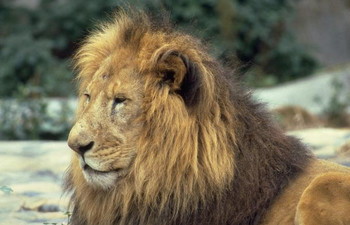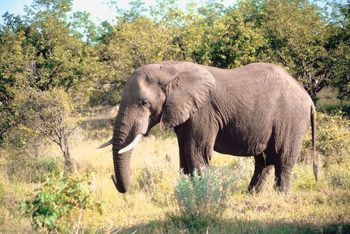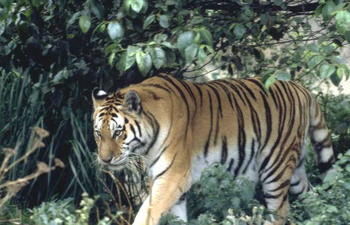- Учителю
- Урок по английскому языку в 6 классе «Животные в нашей жизни».
Урок по английскому языку в 6 классе «Животные в нашей жизни».
Конспект урока английского языка по теме :
«Животные в нашей жизни». (Animals in our life).
Цели:
образовательные:
-
развитие у учащихся лексических навыков;
-
развитие навыка чтения и общего понимания незнакомого текста;
-
развитие навыка монологической речи.
развивающие:
-
развитие логического мышления;
-
формирование у учащихся познавательного интереса к учению;
-
развитие у учащихся умения учебного труда (работа в заданном темпе);
воспитательные:
-
осмысление учащимися экологических проблем (бережное отношение к животным);
-
формирование толерантного мышления учащихся.
Задачи:
-
научить учащихся высказывать свою точку зрения и аргументировать ее;
-
сформировать умение задавать вопросы разных типов;
-
сформировать умение четко определять области знаемого и незнаемого;
-
развить навыки коммуникативной компетенции.
Оснащение урока: коллаж, раздаточный материал, видеоролик, проектор , компьютер.
Ход урока
-
Организационный момент.
-
Беседа с дежурным.
-What date/day of the week/weather is it today?
-
Речевая зарядка.
- Who has got a pet?
-What pet have you got?
-You take care of your pet, don't you?
-Do you take your pet for a walk?
-What does your pet like to eat best of all?
4. Целеполагание.
- Look at the screne. Could you think tell me what topic we are going to discuss today?
- Well, you are right. The theme of our lesson is «Animals in our life».
(Учитель записывает на доске тему урока)
5.Активизация лексики по теме
-игра «Мое любимое животное». Для игры применяется раздаточный материал: (см Приложение 1)
Приложение 1


-
My 1st favourite animal ….., because it …
My 2nd favourite animal…? Because it …
I don't like …., because they….
I would like to have …. аt home, because it …
(Лист, на котором даны прилагательные, разрезается. Карточки переворачиваются лицевой стороной вниз. Учащиеся берут карточки и, опираясь на данные прилагательные, составляют высказывания. Учащийся берет 4 карточки для своего высказывания.)
6. Развитие лексических навыков монологической речи.
-на дом было задано составить высказывание о проблемах животных, используя коллаж и опорную лексику.
-But you know all animals have problems. Let's discuss animals' problems.
-коллаж (см Приложение 2)
Опорная лексика: domestic, wild, destroy their habitat, kill, homeless, treated badly, for their skin
-физминутка видео «Пингвины»
7. Просмотр видео «Animals in danger».
- Now we are going to watch a short video. Work with a partner. Predict and write down the names of other endangered animals that you may see in the film.
-What animals have you got?
(После просмотра фильма)
- What animals were there? Let's check if we named all of them.
Do you have any other animals in your lists?
Which of them live in Russia?
Did you see these animals at the Zoo?
Have you ever seen any of them?
8. Поисковое чтение. Работа с текстами (см Приложение 3)
-работа в группах по 4 человека
- Now you are going to read the text in your books and tick the information you know with exclamation mark(!), new information - with (+), the information you didn't know with (?) interrogation mark.
(После прочтения, обсуждение. Составление таблицы на доске и устный рассказ о том, что нового узнали.)
I know (!)
New for me (+)
I didn't know (?)
9. Создание постера (The Code of Rules)
- Let's divide into groups. This part of the class (group 1) will find what we Should Do and that part (group 2) what we Shouldn't Do.
(Разделившись на две группы, по 6 частей предложения, анализируют их и выбирают те, которые подходят под задание для их группы, затем приклеивают нужные части на постер, заранее размещенный на доске).
(be friendly with animals, feel responsible for pets, feed birds and help them, harm or hurt animals, kill animals for fun, frighten animals)
- Well done!
10. Рефлексия.
-Закончите предложение на доске:
1) Today I __________________________________
2) If people _________________________________
3) That's good that____________________________
11. Составление синквейна.
1 существительное (animals)
2 прилагательных ( endangered and extinct)
3 глагола (save, protect, help)
4. Отношение к теме ( We should protect animals)
5. Смысловое заключение одним словом (Protection)
11. Домашнее задание
Your homework is under your stories about lions, tigers and elephants . Find the information about animals in danger on websites and be ready to share the most fascinating facts with your classmates and friends.
Приложение 2 -см ниже в этом же документе
Приложение 3
Lion Facts
Lion Facts
L ions are one of the largest cats in the world. They live in southern and eastern parts of Africa. Lions are only social cats which live in groups called "prides". Each pride is composed of one or two males and large number of females. Larger prides can consist of around 40 members. Life in a group increases the chance for successful hunt and provides protection of cubs.
ions are one of the largest cats in the world. They live in southern and eastern parts of Africa. Lions are only social cats which live in groups called "prides". Each pride is composed of one or two males and large number of females. Larger prides can consist of around 40 members. Life in a group increases the chance for successful hunt and provides protection of cubs.
Interesting Lion Facts:
Lions are carnivores and they hunt mostly antelopes, zebras and wildebeests. Although lions are larger and stronger, lionesses are in charge for the hunt.
Lions act like scavengers and often attack hyenas and steal their prey.
During one meal, lions can eat up to 40 pounds of meat. After they fill their bellies, lions will snooze more than 20 hours.
Lion back teeth are called carnassals and they work like a pair of scissors. Chopped meat will be swallowed without chewing.
Lions are easily recognized by their manes. Larger and darker mane suggests that lion is very strong and other lions often avoid him. Lionesses react differently - they are attracted by the large and dark manes.
When lion and lioness meet, they greet each other by rubbing. During this process, they exchange scents.
Lioness will give birth to 1-3 cubs each 2 years. Cubs have spots at birth, but they disappear in time.
When lion and tiger mate, new type of animal named liger is created. Liger has stripes like tiger, but the color of its fur is pale compared to tiger's fur.
Lions have retractable claws, which mean that they could "hide" their claws during the play and avoid hurting each other.
Long tail provides balance when lions are running, but it can be also used to signalize various commands to other members of the pride: "come", "I am flirting with you", "go this way"…
Porcupine is one of the worst enemies of lions. Their sharp quills can be stuck in the lion's jaw for the rest of his life.
Until they reach 2 years, lions can't roar. Once they learn how to vocalize, their roars can be heard on the distance of up to 5 miles.
When young males reach maturity, older males will kick them out of the pride. When they wander on their own, young lions are known as nomads. If they manage to survive and gain strength, they will battle with other lions to take over a pride for themselves.
When new lion take over a pride, it kills all cubs that are not his own. In the wild, ¾ of cubs die at young age.
Lions live up to 15 years in the wild, while they can survive 25-30 years in captivity. Number of lions decreased drastically in the past couple of decades. They are one of the well known endangered animal species.
Elephant Facts
E lephants are the largest land mammals on Earth. Indian, savannah and forest elephant are three remaining species of elephants. Indian elephant has small ears and it is much smaller compared to other two species. Savannah and forest elephant live in Africa. All elephants are highly endangered due to increased hunting and habitat loss.
lephants are the largest land mammals on Earth. Indian, savannah and forest elephant are three remaining species of elephants. Indian elephant has small ears and it is much smaller compared to other two species. Savannah and forest elephant live in Africa. All elephants are highly endangered due to increased hunting and habitat loss.
Interesting Elephant Facts:
Elephants live in herds guided by oldest and wisest female member. Male elephants will leave the herd when they reach 12 years. They will form "bachelor" herds before they become old enough for a solitary life (life on their own).
Elephants sleep 2-3 hours per day. They spend the rest of the time in eating. Elephants are vegetarians (eat only plants).
Elephant's favorite food is acacia. If ants crawl on the tree, elephants will move away from the tree because ants can injure elephant's sensitive trunk.
Trunk is a large and muscular fusion of elephant's nose and upper lip.
Young elephants (babies) suck their trunks just like human babies suck their thumbs. This provides comfort.
Elephants that live in captivity can use their trunks for the artistic purposes. They can hold the brush and paint various pictures.
Elephant's skin is one inch thick, but it can burn on the sun if it is not protected. Elephants use mud to cover their skin and protect it from the sun.
Elephants communicate by producing the sounds that humans can't hear and by producing vibrations in the ground using their feet.
Elephants perform "burial ceremony" when they lose a member of the herd. They gather around the body and stay in silence for a while. They will use branches to cover the body before they leave.
Elephants can recognize themselves in the mirror. Just few animals beside human toddlers are able to do that.
Elephants don't like to eat peanuts.
Due to their large size, elephants need to eat 150kg of vegetation per day.
Worn out teeth will be replaced 6-7 times in a lifetime (humans replace their milk teeth once in a lifetime).
Elephants flap their ears to cool themselves. If they are cooling themselves in the water, elephants will use their trunk as a snorkel.
Elephants live 60-70 years in the wild. In captivity they can live more than 80 years.
Tiger Facts
Tiger Facts
T igers are the biggest cats in the world. They can survive in wide range of climates of Asia and Russia: from tropical rainforest, and savannas to the Siberian forests. There are 5 subspecies of tiger. All of them are critically endangered: just 7400 tigers are left in the wild! Their number decreased greatly due to poaching (they are hunted for fur) and loss of habitat. Some people keep tigers as pets. In the USA, number of tigers that are kept as pets is larger than the number of tigers in the wild.
igers are the biggest cats in the world. They can survive in wide range of climates of Asia and Russia: from tropical rainforest, and savannas to the Siberian forests. There are 5 subspecies of tiger. All of them are critically endangered: just 7400 tigers are left in the wild! Their number decreased greatly due to poaching (they are hunted for fur) and loss of habitat. Some people keep tigers as pets. In the USA, number of tigers that are kept as pets is larger than the number of tigers in the wild.
Interesting Tiger Facts:
Tigers are large cats. Siberian tiger is the biggest of all subspecies. It has 11 feet in length and can weigh up to 660 pounds. Tiger's long tail provides balance and it can be used for communication.
Tigers are best known for their stripes. They have more than 100 uniquely positioned stripes that are used for the identification of tigers (just like our fingerprints). Stripes provide camouflage.
White tigers are special kind of tigers that appears rarely in the nature. These tigers have white fur with stripes and blue eyes.
Tigers are solitary animals. They meet only during mating season. In rare cases when tigers form a group, it is called a "streak" of tigers.
They are territorial animals, which mean that they demand certain piece of the wild just for themselves. Depending on the tiger species that area usually ranges from 10-30 square miles, but in some cases it can be much larger - up to 120 square miles.
Tiger will mark his territory with a mixture of the urine and liquid from a gland that has intensive smell. That way, other tiger will know that territory is occupied.
Tigers have large paws and sharp, retractable claws (they can hide their claws). They use them for killing of the prey and for fight with other tigers. Print of tiger paw is called pug mark.
Tigers usually eat large mammals like wild boars and deer. Besides them, they can attack and kill a python, crocodile and even a bear.
Tigers are ambush predators - they will catch their prey using the element of surprise.
Tigers are excellent swimmers. They can swim 4 miles with a prey in their mouth.
Female tiger is called tigress. At age of 3 and half years, tigress is ready to become a mother for the first time. She usually has 3-4 cubs. Although she is very protective mother, half of her cubs will be killed by predators and male tigers or die because of the lack of food.
Low number of cubs that survive will leave their mother at age of 2 and start a solitary life.
Tigers have excellent sight of vision. They see 6 times better than humans at night. They hear well and produce roars which are especially loud and characteristic during mating season. They can be heard one mile away.
Tigers are very fast animals. They can run 35-40 miles per hour. They are good jumpers also; they can leap a distance of up to 10 meters.
Tiger can survive 10-15 years in the wild and around 20 in captivity.